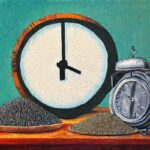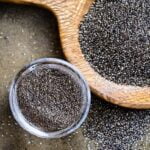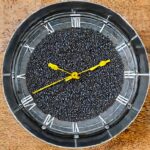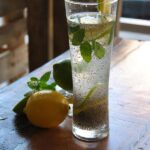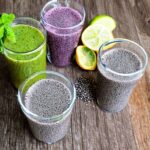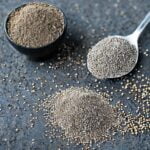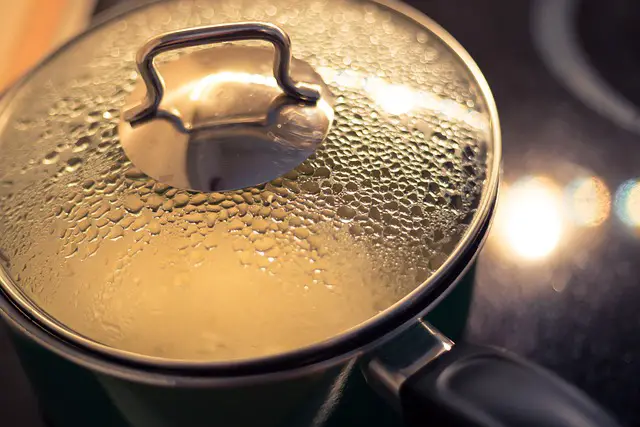
There’s someone I know who boils their chia seeds in oatmeal every morning. This is a question that will sometimes be asked about chia seeds, can you boil chia seeds?
While you can boil chia seeds, and they will be edible, I don’t recommend it, and here’s why. (If you want to learn more about chia seeds in general, see our Chia Seed Guide)
Can You Boil Chia Seeds?
You can boil chia seeds, however, it may not be the best thing to do, as we will explore.
Here’s an example of someone boiling chia seeds in their oatmeal.
But, that doesn’t necessarily make it a good idea. And here’s why it may not be a good idea to boil chia seeds.
Does Heat Destroy Chia Seeds?
You see, boiling chia seeds might degrade their nutritional value. I say might, since there is no evidence that says one or the other, whether this is true (there are no studies at this point showing if heating or boiling chia seeds affects the nutritional value).
But anytime you heat food to a high temperature, you run the risk of degrading some of its nutritional content, with boiling causing the greatest amount of nutrient loss compared to other cooking methods. How Cooking Affects the Nutrient Content of Foods
In the case of chia seeds, there is the concern that heating them will cause their omega-3 or antioxidant contents to be reduced or lost. For the Omega-3s, this is because fatty acids can degrade if exposed to heat. This is one of the main nutritional benefits of chia seeds, their high omega-3 content.
Although they do have other good nutrients in them, including lots of fiber, you might not want to risk losing or degrading the omega-3s. (Link: Does Frying, Baking and Canning Fish Affect the Omega-3 Content?)
It’s also a concern that the antioxidant content could be reduced by boiling or just heating. Boiling may reduce antioxidant content by 60%.
Since two of the main nutritional benefits of chia seeds are the antioxidants and the Omega-3s, this is why boiling, or even just heating them might not be good. The chia seeds might lose some of their wonderful health benefits after boiling them. (Learn more at Does Heating Chia Seeds Destroy Nutrients?)
Can You Boil Chia Seeds in Oatmeal?
One good thing to do if you are trying to eat healthier or even use chia seeds for weight loss is to add some chia seeds to your breakfast oatmeal in the morning. (Chia Seeds in Oatmeal Benefits)
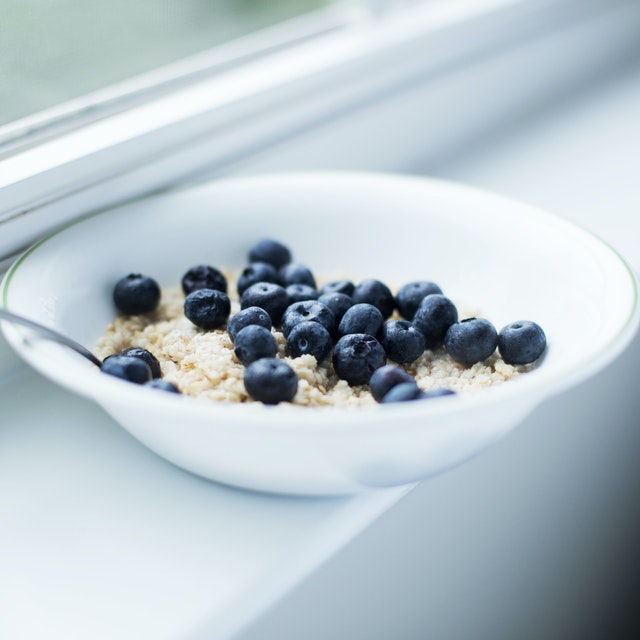
As I mentioned at the start of this post, I do know someone who cooks, or boils, their chia seeds with oatmeal every morning. So yes, it is possible to do. You just add the chia seeds into the oatmeal while you are cooking it. (You can find an easy way to do this at Can You Boil Chia Seeds with Oatmeal)
But, I don’t recommend boiling chia seeds with oatmeal as the best option. (Although you will still get benefits from the chia seeds and oatmeal) But, as mentioned previously, heat could potentially destroy nutrients such as omega-3 fatty acids. (See also Can You Boil Flax Seeds)
A better way would be to either sprinkle ground-up or raw chia seeds on top of the cooked oatmeal or soak the chia seeds ahead of time. Then, the soaked chia seed gel can be added to the oatmeal, after it has been cooked.
(For more great ideas on how to use chia seeds without boiling them, see How to Eat Chia Seeds)
How to Eat Chia Seeds
There are different ways to eat chia seeds that don’t involve boiling them. Some of the options include eating them raw (such as sprinkling them on food), soaking them in water or liquid first, or grinding them.
(For some great quality chia seeds at a very low price, I recommend the Organic Chia Seeds at iHerb here)
How to Cook Chia Seeds for Breakfast
For breakfast, we will either soak or chia seeds or grind them, and then add the soaked or ground chia seeds into the oatmeal, after it has been cooked (and not before). See: Chia Seeds with Water Benefits
Sometimes cooking food will help to increase our ability to digest the food and its nutrients. But, with chia seeds, there is a better way to increase their digestibility and make them easier to eat, without having to cook them. It’s known as soaking chia seeds.
How Do You Prepare Chia Seeds to Eat?
When you soak chia seeds, you allow them to germinate and increase their digestibility in your system. You also reduce the phytic acid content of the chia seeds.
See: Do You Need to Soak Chia Seeds Before Eating?
You soak chia seeds by simply placing them in water and allowing them to sit for some time. (See How Long to Soak Chia Seeds). This will create a gel-like substance, which you can easily add to whatever you would like.
It’s also preferable to eating them raw, since when you eat chia seeds raw, they can be slightly crunchy, and also stick to your teeth! (But you can still eat them raw if you choose). An even better method that I have recently found is actually grinding your chia seeds. (This helps to really increase their healthy omega benefits)
Because of this, I recommend not boiling them (or possibly heating them at all) if it can be avoided. Instead, soak the chia seeds and add the soaked chia seeds to whatever you are cooking, after it has been boiled and cooked, such as with oatmeal (or rice). Or you can grind the chia seeds and then add them to your cooked oatmeal or porridge after it has been cooked.
Every morning for the last couple of years, I make and eat a very healthy high-fiber breakfast bowl of oatmeal which includes ground-up or soaked chia seeds, as well as many other great superfoods.
Here’s my healthy breakfast oatmeal with chia seeds recipe.
Another way to eat chia seeds is to make a chia pudding using some almond milk. However, be mindful of how much chia seeds you are eating per day, as too many chia seeds could cause digestive issues if you aren’t used to the extra fiber. See How Much Chia Seeds Per Day.
Can You Cook Chia Seeds with Porridge?
Cooking chia seeds with porridge poses the same problem as mentioned above with oatmeal (oatmeal is a type of porridge). Cooking the chia seeds in the porridge could potentially degrade their nutrients and lessen their health benefits.
Here’s an idea for chia seed porridge that doesn’t involve cooking the chia seeds.
Can You Boil Chia Seeds in Water?
It might be possible to boil chia seeds, but I’ve never known anyone to do so. Generally, the preferable way is to soak the chia seeds in water instead, until they create a gel. (You can also make chia seed pudding this way). Another option is to just sprinkle them on top of what you are eating and eat them raw.
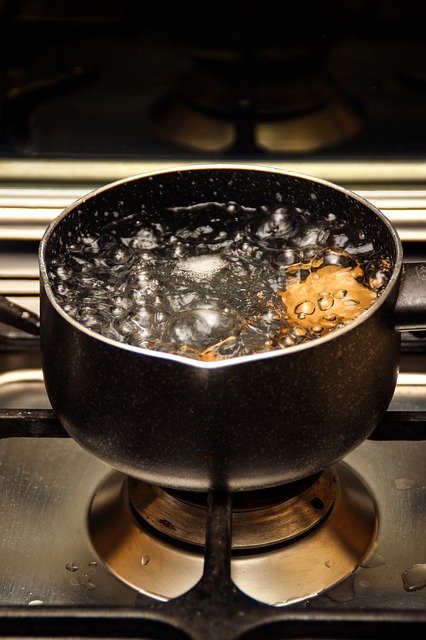
Can You Boil Chia Seeds in Milk?
Boiling chia seeds in milk is the same issue as boiling chia seeds in oatmeal or water. You can boil chia seeds in milk, and they will still be edible, however, you may lose some of the nutritional benefits of the chia seeds.
This is because the excess heat will destroy some of the nutrients.
Can You Heat Chia Seeds?
You can heat chia seeds, and heat will not necessarily ruin them. Just like with any food, there will always be nutritional value, even after being heated. But, heat can degrade some of the nutritional content of chia seeds.
If you do heat chia seeds, be mindful not to overheat them. Try to only heat them for as little as possible. (See Can Chia Seeds Be Heated?)
This is why I recommend eating the chia seeds after they have been soaked or ground up, or eating them raw (sprinkled or mixed into something else). (See Can You Eat Chia Seeds Raw?)
Can You Heat Chia Seeds in the Microwave?
You can heat chia seeds in the microwave, but just like with boiling them, there is the possibility that the heat will cause the loss of some of the nutrient quality, just as boiling would. (See Can You Heat Chia Seeds in the Microwave?)
Can I Soak Chia Seeds in Hot Water?
Chia seeds can be soaked in hot water, but there is no need to. Since heat might destroy some of the nutrients, it’s probably best to soak chia seeds in cold water or room-temperature water instead.
See Can I Soak Chia Seeds in Hot Water for more info.
Lance has been passionate about the plant-based diet and we have been following a whole food plant-based diet for over 5 years. We focus on health, natural healing, weight management, animal rights, and the health of the planet and environment by focusing on whole plant-based foods and sustainable practices.
Learn more at the About Me page and follow on social media at the links below.

